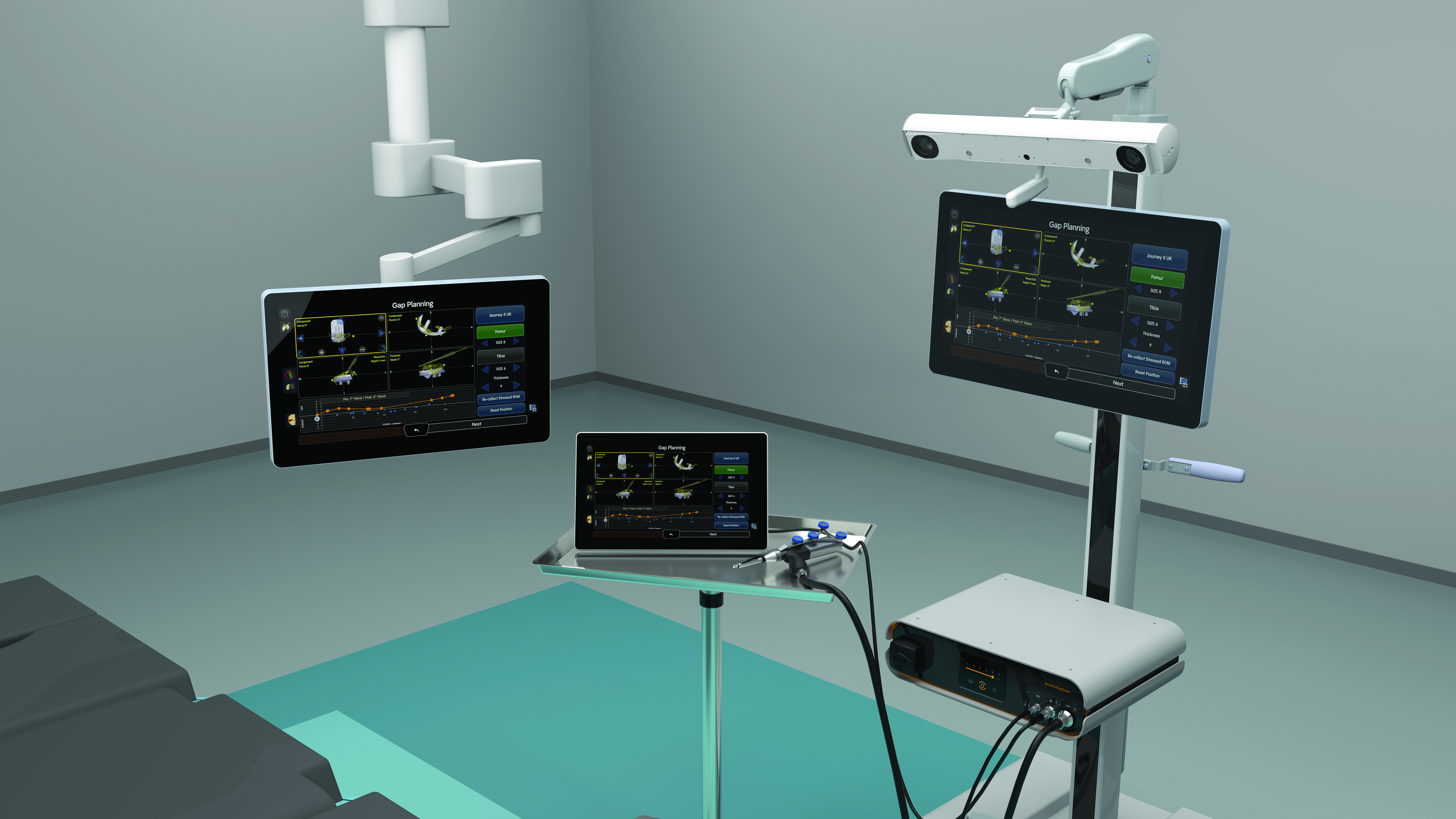Orthopedic Robotic Surgery
.jpg) |
Unique robot-assisted surgeries at Liv Duna Medical Center. Discover the new dimension of robotic surgery with the expertise of Liv Duna Medical Center and Budapest Musculoskeletal Private Clinic! Using the most advanced robotic technologies and artificial intelligence, our orthopedic robotic surgeries provide personalized procedures and a higher level of safety for our patients. |
Innovative Robot-Assisted Knee Replacement and Robotic Navigated Hip Replacement
The combination of surgery and robotics has brought revolutionary innovations to the medical field, benefiting both patients and doctors. Orthopedic robotic surgery is one of the most modern and innovative solutions that has already become a part of current medical practice.
Budapest Musculoskeletal Private Clinic and Liv Duna Medical Center apply the latest robotic surgical methods to ensure that hip and knee replacements are more precise, efficient, and safe. This technology allows surgeons to focus on even the smallest details, resulting in fewer complications and faster recovery for patients.
Robotic surgery represents a real breakthrough in orthopedics, enhancing the precision and experience of surgeons with the accuracy and knowledge of artificial intelligence. Knee and hip replacements require extreme precision, as even millimeter-level deviations can cause discomfort.
Robotics enables a level of surgical accuracy that was previously unimaginable.
The greatest advantage of robotic surgeries is that they not only ease the work of doctors but also provide better outcomes for patients.
Robot-Assisted Knee Replacement for Natural Knee Function
Robot-assisted knee replacement surgeries allow surgeons to perform procedures with exceptional precision, ensuring the optimal placement of the prosthesis and preserving natural knee function. This technology is particularly advantageous in more complex cases. Long-term, robot-assisted knee replacements can result in stable, pain-free movement for patients.
The key benefits of robot-assisted knee replacement surgeries include:
- Maximum precision and longer prosthesis lifespan: With the support of the CORI robot, surgeons can place implants with accuracy down to a tenth of a millimeter, leading to a longer prosthesis life and better mobility.
- Minimal tissue damage: Thanks to minimally invasive techniques and precise interventions, surrounding tissues, muscles, and ligaments suffer less trauma.
- Faster recovery: The precision technology enables patients to experience less post-operative pain and shorter rehabilitation times.
- Improved ligament balance: The robot helps optimize the alignment of knee ligaments, which is crucial for maintaining natural movement.
- Personalized implantation: The robot allows surgeons to consider the patient's unique anatomical differences, providing a custom-fit prosthesis even in complex cases.
- Reduced limb length differences: Robotic-assisted knee replacements help avoid post-surgery limb length discrepancies.
- No need for preoperative imaging: The CORI robot provides real-time visualization of the knee's condition during surgery, eliminating the need for pre-surgery CT or MRI scans.
- Natural feeling: The robot takes into account the full anatomy of the patient's lower limb, assisting in the planning of prosthesis placement to help the patient feel like they have regained their knee's natural function.
.jpg)
The Importance of Ligament Balance
During robot-assisted knee replacement surgeries, achieving the precise balance of the ligaments is crucial for long-term success. Well-adjusted ligaments ensure that the knee prosthesis remains stable, providing the patient with a more natural movement experience after surgery. This precision technology significantly reduces the risk of pain and postoperative complications.
Correcting Unique Anatomical Variations with Orthopedic Robotic Surgery
Robot-assisted knee replacement surgeries are particularly beneficial for patients with unique anatomical variations, such as deformities (like bowlegs or knock-knees) or severely worn joints. Robotic-assisted knee replacements allow surgeons to correct even the smallest deviations that were previously impossible to address using traditional methods.
How the CORI Robot Works in Robot-Assisted Knee Replacement Surgeries
The CORI robot, developed by Smith & Nephew, is used by Liv Duna Medical Center and Budapest Musculoskeletal Private Clinic. It is an AI-supported surgical system that provides outstanding assistance in orthopedic surgeries, especially for hip and knee replacements.
The unique operation of the CORI robot allows surgeons to track every detail of the prosthesis placement in real-time during the surgery. The robot creates a digital map of the patient's anatomy that the surgeon can check at any moment during the procedure. This system enables the surgeon to determine the location and direction of the surgery with utmost precision.
Using its precision tools, the robot prepares the bone surfaces much more accurately than traditional methods. It removes only as much bone as necessary for the perfect placement of the prosthesis, similar to a reversed 3D printing process.
The technology supports the surgeon’s work by making the surgery as precise and safe as possible, rather than replacing the surgeon.
The CORI system continues to improve through its AI, learning from previous surgeries to refine its techniques. This continuous enhancement makes the system more efficient and accurate, increasing surgical success rates and reducing complications.

CORI Robot Navigation Technology for Hip Replacement Surgeries
The most unique feature of the CORI robot in hip replacements is its navigational precision and personalized planning. The navigation system allows surgeons to perform the surgery with digital support in real-time, leading to more accurate implant placement. This not only enhances the long-term success of the prosthesis but also significantly reduces the need for revision surgeries.
The CORI robot does not require preoperative CT or MRI scans, yet it accurately reconstructs the patient's hip's biomechanical parameters during the surgery.
Its advantages include minimally invasive surgical exposure enabled by the robot’s precise navigation.
|
Main Advantages of Orthopedic Robotic Surgery:
|
.png) |
The Highest Level of Patient Care at Budapest Musculoskeletal Private Clinic in Orthopedic Robotic Surgery
.jpg) |
Budapest Musculoskeletal Private Clinic and Liv Duna Medical Center are committed to using the most advanced technologies in patient care. With the CORI robot, patients gain access to the latest orthopedic robotic technology, ensuring a fast recovery and successful long-term outcomes. Our dedication to innovation and quality ensures that our patients receive the highest level of care. The benefits provided by the CORI robot prioritize the comfort and well-being of patients. |
If you would like to experience the benefits of robotic surgery (robot-assisted knee replacement and robotic navigated hip replacement), book an appointment with our surgeons! The future of surgery is here today, allowing you to return to an active, pain-free life with the best technology available.














